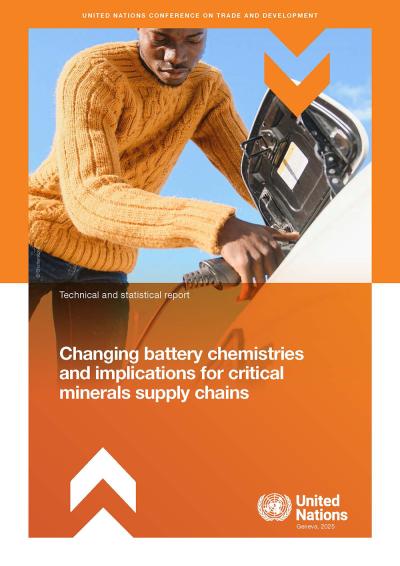
Global carbon dioxide (CO2) emissions from the energy sector are increasing despite ongoing global efforts to mitigate them. In 2023, energy-related CO2 emissions reached a record high of 37.4 billion metric tons, a 1.3 per cent increase from the previous year.
This rise highlights the imperative of energy transition, from polluting fossil fuels to the widespread adoption of clean energy technologies within the energy mix. Among these technologies, batteries and battery storage systems with improved or new battery chemistries will play a crucial role in the energy transition.
Key messages:
As the energy transition rapidly expands, demand for critical minerals used in battery technologies is expected to rise sharply. These minerals include lithium, cobalt, nickel, phosphate and graphite – along with emerging materials like sodium, zinc, sulfur, and silicon.
This increase is anticipated to expand supply in producing countries and potentially lead to higher export revenues, providing funds that governments can reinvest in other economic sectors. Developing countries with raw materials used for battery manufacturing can leverage this opportunity to spur industrial development by investing in manufacturing facilities, and implementing value addition activities which will generate jobs in mining, processing and further downstream sectors, contributing to economic diversification and resilience.
Innovations in battery technologies and chemistries are pivotal for the energy transition. These advancements enhance energy storage capabilities, improve battery efficiency and performance, and utilize more sustainable and less environmentally damaging materials.
- Battery technologies provide advanced energy storage solutions, ensuring a stable and resilient energy grid, enhancing energy access in developing countries and fostering economic growth.
- Advancements in battery technologies and chemistries also have a significant impact on the global transportation sector, supporting longer ranges and faster charging times, making electric vehicles (EVs) more appealing to consumers.
- Evolving battery chemistries can reduce costs, mitigate supply chain risks, and potentially address ethical concerns related to mining the minerals used in these technologies, such as child labour.
To fully realize the potential of new battery technologies and chemistries, governments should address challenges such as safety, scalability, skills gap, and using less toxic materials to reduce environmental impact. Robust supply chains for alternative materials must also be established.
Policy priorities to support the sustainable development of industries centred around critical minerals should focus on:
- Targeted education and training programmes to develop a workforce capable of supporting the growing battery and energy storage sectors.
- Infrastructure investment to scale up industrial production and expand supply chains.
- Reform extraction and processing regulations to ensure sustainability, value addition and community benefits.
- Strengthen transparency and accountability in supply chains.
- Support research and development (R&D) to build upon new battery chemistries and improve existing ones.
- Foster collaboration between public and private sectors and promote international partnerships to share knowledge and best practices.
Harnessing the opportunities in battery technologies and critical minerals supply chains can drive economic growth, create jobs, and foster a sustainable and equitable global energy future.


